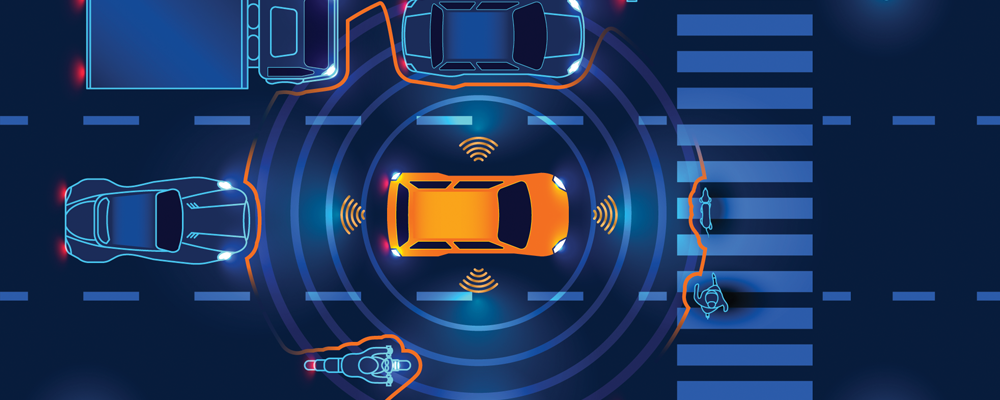If you live in the San Francisco area, be it on the peninsula or across the other side of The Bay, you would be hard pressed to miss the ever-present storyline behind autonomous driving. If there is another region anywhere in America where traffic, as snarled-up and congested as it is today, can be found – excluding the greater Los Angeles area – then I don’t know where it would be. It’s nasty and getting worse, so given the opportunity to sit back, do email, talk to friends and associates and in general, relax, I would likely make the transition.

But here’s the problem and it’s a big one! Today’s driving population is split right down the middle and it’s generational. On the one side of the ledger we have those who absolutely relish the opportunity to drive anywhere where relinquishing the wheel is anathema to them. Contrast those where driving is nothing more than a chore where no involvement with the process is a pleasure. Mixing both populations on the same road presents a challenge to everyone involved in planning the introduction of autonomous cars.
“You cannot underestimate the amount of information that is being transferred between drivers just by their actions.” Shlomo Zilberstein, a computer science professor at the University of Massachusetts Amherst, told USA Today. “Understanding these messages is quite complicated for computers today … It’s communicating by your action such as eye contact, the wave of a hand, or the slight revving of an engine.” In a Popular Mechanics article of February 5, 2015, Why Self-Driving Cars Aren’t Ready to Share the Road With Humans reporter Carl Franzen notes how, “we’re finally getting to the point where self-driving cars can drive on their own, and the next big step is sharing the road with humans. The trouble is that while the robots can navigate roads, they don’t think like humans.”
Indeed, suggests Franzen, “Perhaps the biggest issue with self-driving cars lies in their inability to make moral and ethical decisions for which human drivers have so far been almost entirely responsible.” And yet, “If we could transition to all autonomous cars tomorrow, it would be simpler than a mixed situation with most cars still having human drivers,” Zilberstein says. “But once you have people, you have to cope with the uncertainty and complexity of human behavior.” In yet another application of the real world need to understand changes in behavior, auto manufacturers are running into many of the same problems industry as a whole is facing in the push to become even more competitive. Changes in behavior lead to opportunity and missed opportunities are difficult to recapture, but through dangerous metal into the mix and we are going to go through some very painful transitions.
Or, perhaps not? With as much discussion as there is today around the Internet of Things (IoT) and in this case, Vehicle to Vehicle (V2V) communication, could business analytics play a role? The real world, as depicted above in the case of autos, is yet another instance of the need for analytics to happen in real time. While the legal profession may entertain new business opportunities scouring through data post-accident(s), for the owners of self-driving cars the decision making has to happen right now. I’m at a four way stop sign, who goes first?
Suddenly the merits of ETL and batch style approaches lose their sheen. Only technologies capable of stream analytics have what it takes to be beneficial in understanding changing behavior and this includes the behavior of dozens if not hundreds of vehicles in close proximity to my vehicle. In talking to the team at Striim I get a real sense of the importance of their web site tag line, “Make data useful the instant it’s born.” Stated another way, make data useful in the instant before a likely crash!
V2V is just one example of the exploding world arising from sensory overload. Sensors can be deployed everywhere we wish and cars will be no exception. The communication bandwidth above our freeways is going to heavily overloaded in no time at all and by 2020, “there will be cars that can drive autonomously some of the time, and we’ll have to accept that,” according to Zilberstein and hence, some pretty good industry-strength processing going on behind the scenes.
Suppose there is an autonomous car that is so good, so smart, it can react quickly to any situation,” he says, even predicting the probable outcomes of an accident. “What should it do when faced with a choice of either harming someone’s pet or hitting a streetlight?” What would the car decide? What should it decide? This is mathematics at its finest and for those worried by the rapid developments in AI, then this is just one more scenario that will bring the boundaries between humans and machines one step closer. Make data useful the instant it’s born? The instant it’s needed to detect changes in behavior? The instant it can make a difference? More complex yet, tapping into resources of drivers who remain behind the wheel, making their own decisions, to better detect changes in their behavior.
The value of Striim is coming to the attention of many communities and the NonStop community isn’t being ignored. While we can paint many different scenarios that will rely on stream analytics as it has to do with autonomous driving, any mix of automation with human engagement will be activities subject to analysis in real time. There’s a reason that, when it comes to aircraft, we call it auto-pilot and not auto-plane. There’s still a responsible person in the seat, at the controls, just in case and for our own protection, more often than not there is at least two occupants up front in every plane we fly.
NonStop systems have a strong presence in financial, telco, healthcare and manufacturing industries and these are seeing greater reliance on automation. So yes, the application of Striim to what NonStop systems oversee is every bit as important as the systems in support of cars and planes. Nowhere do we see there being any lessening in the demand for better, timelier, information on changing behavior so being able to correlate real world activities with predictive models and apply course corrections all in real time, is becoming a necessity and not just a nice to have. Almost every piece of IT infrastructure we can depict will come with some form of stream analytics built in.
“When we talk about the instance data is born and then making that available to operational systems (so action can be taken) – all in real time,” says Striim Cofounder, Sami Akbay, “then it’s important to know that there really isn’t any application where such access isn’t critical. Just as importantly, having really no limits as to what Striim can consume, the subsequent fine granularity of the data itself will contribute greatly to lessening the type of information that may be missed at critical times in decision making – maybe hitting the post with your car is actually the correct action to take!”
As a driver who will resist giving up control of his car till the very end, I am very cautious about what I see coming. However, as someone who interacts with NonStop systems almost daily – at the ATM, the gas pump, the grocery store checkout, my mobile phone’s text messaging application or even the systems in my colleagues Mercedes Benz – it’s good to know that Striim has the properties to help me out every step, and indeed, every mile, along the way.













